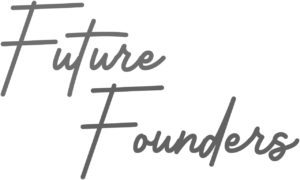
Why Appointment Setting Matters in Modern Sales
Appointment setting is one of the most crucial elements in the sales process, yet it’s often misunderstood or underestimated. It serves as the bridge between prospecting and closing, helping sales professionals connect with qualified leads and turn them into paying clients. When done right, appointment setting doesn’t just fill calendars—it drives revenue growth and builds stronger relationships with potential customers. Many businesses fail to realize that consistent, quality appointments are the foundation of predictable sales performance.
A well-organized appointment setting system enables businesses to maximize their time, focus on high-value prospects, and create meaningful interactions instead of random cold calls. It’s not just about getting a “yes” to a meeting; it’s about creating opportunities for trust and value exchange. Appointment setting learn processes can help professionals refine their communication and timing, allowing for more meaningful conversations that lead to conversions. When you master this skill, you don’t chase clients—they look forward to hearing from you.
Understanding the Appointment Setting Process
To effectively master appointment setting, it’s important to understand what the process involves. Appointment setting is not merely calling leads; it’s a systematic process of identifying potential customers, engaging them in valuable conversation, and scheduling a meeting to explore business solutions. It bridges marketing and sales, turning curiosity into interest. Many confuse it with lead generation, but while lead generation collects contacts, appointment setting activates those leads and moves them through the sales funnel.
An effective appointment setting process typically includes prospect research, outreach, qualification, conversation, and follow-up. It’s about being strategic and intentional at every step rather than relying on scripts alone. You must know when to reach out, what to say, and how to offer value that resonates with the prospect. By following a structured system, you increase your chances of connecting with decision-makers and building trust early in the sales journey. Appointment setting learn methods focus on mastering this repeatable process that can scale with your business.
Building the Right Foundation Before You Start
Before making any calls or sending messages, every appointment setter must first establish a strong foundation. This starts with knowing exactly who your target audience is. Not every lead is worth your time, so understanding your ideal buyer persona saves effort and increases conversion rates. Researching prospects allows you to customize your approach and speak directly to their needs, making conversations far more impactful.
Here are key elements to set up before reaching out:
- Identify your target market and ideal customer profile
- Use a CRM to organize leads and track interactions
- Develop a lead qualification checklist
- Prepare talking points tailored to each buyer type
- Establish follow-up schedules and reminders
Once this groundwork is laid, appointment setting becomes much smoother. A solid foundation ensures that every call or email has direction and purpose. Without this preparation, even the most persuasive script will fall flat. Investing time in pre-call research can dramatically improve your success rate and position you as a professional who values their prospect’s time.
Developing a Winning Mindset for Appointment Setters
Mindset is everything in appointment setting. Many professionals underestimate the mental resilience required to succeed in this role. Appointment setters deal with rejections daily, yet those who thrive are the ones who see every “no” as a step closer to a “yes.” Confidence, persistence, and empathy form the backbone of a successful appointment-setting career.
Developing this mindset involves mastering emotional intelligence and self-discipline. The ability to stay calm, positive, and persuasive under pressure determines how far you go in this field. You must learn to listen actively, understand what prospects truly need, and adjust your approach accordingly. Appointment setting learn programs often emphasize these soft skills as much as technical training because they directly influence performance.
Empathy allows you to connect on a human level, making prospects feel heard and understood. Persistence ensures you follow through and maintain engagement without crossing into pushiness. When these traits combine, you create authentic interactions that build trust—and trust leads to appointments that convert.
Crafting the Perfect Script for Successful Calls
A well-crafted script can make or break your appointment-setting efforts. It’s not about memorizing lines—it’s about creating a conversational framework that guides the dialogue naturally. A successful script has structure but remains flexible enough to adapt based on the prospect’s responses.
Key elements of an effective appointment-setting script include:
- A personalized opening that captures attention
- A clear value proposition that resonates with the prospect’s needs
- Open-ended questions that encourage discussion
- Empathetic responses to handle objections
- A strong call-to-action for scheduling the meeting
The tone, pacing, and delivery matter just as much as the words themselves. Speak confidently and listen more than you talk. Show genuine interest, and don’t rush the prospect into agreeing to a meeting. Appointment setting learn frameworks teach that personalization and authenticity often outperform aggressive sales tactics. A well-designed call flow allows you to lead the conversation naturally, keeping both parties comfortable while achieving your goal.
Leveraging Technology for Smarter Appointment Setting
Technology has revolutionized appointment setting, turning what was once a manual, time-consuming task into an automated, data-driven process. With the right tools, you can track calls, send reminders, and manage follow-ups more efficiently. CRMs and scheduling apps simplify the workflow, ensuring no lead falls through the cracks.
AI-powered assistants and chatbots now play a major role in initial outreach, helping identify qualified leads and even scheduling appointments automatically. Integration between these systems and your CRM ensures that data flows seamlessly, reducing administrative tasks and letting you focus on relationship building.
Here are some tools worth exploring:
- CRM platforms like HubSpot or Salesforce
- Scheduling tools such as Calendly or Acuity
- Email automation platforms for follow-ups
- Analytics dashboards to measure performance metrics
By adopting these technologies, appointment setters gain valuable insights into customer behavior and preferences. Appointment setting learn techniques that integrate automation and personalization are now at the forefront of modern sales strategy.
Email and Social Media Strategies for Better Conversions
Appointment setting doesn’t rely solely on phone calls anymore. Today’s professionals use email and social media as powerful tools for engagement. Well-crafted emails can open doors that cold calls might not. The secret is to personalize every message and focus on delivering value rather than making a hard sell.
On platforms like LinkedIn, you can connect with decision-makers, share relevant content, and nurture relationships before pitching an appointment. Social media humanizes the interaction, allowing you to build rapport gradually. Consistency in posting, engaging, and following up keeps your brand visible and credible.
Effective outreach messages should include:
- A personalized greeting mentioning something specific about the recipient
- A short, value-driven pitch
- A clear call-to-action to schedule a meeting
- A follow-up plan to maintain momentum
Appointment setting learn strategies emphasize that combining multiple channels—phone, email, and social—creates more touchpoints and boosts your overall success rate.
Measuring Performance and Refining Your Process
To improve, you must measure. Every appointment-setting campaign should track metrics like call-to-meeting ratio, conversion rate, and show-up rate. These numbers reveal what’s working and where adjustments are needed. High-performing teams constantly review their scripts, timing, and outreach methods.
Analyzing data allows you to pinpoint bottlenecks in your process and implement targeted improvements. For instance, if your follow-up rate is low, automation can help. If your conversion rate drops, it may be time to revise your pitch.
Performance reviews shouldn’t be about blame but growth. Appointment setting learn methodologies teach that continuous improvement is essential for long-term success. A data-driven approach transforms appointment setting from guesswork into a refined, repeatable system that drives consistent results.
Common Mistakes to Avoid When Learning Appointment Setting
Even skilled professionals can make mistakes that hurt their results. One common error is relying too heavily on scripts, which can make conversations sound robotic. Another is neglecting follow-up—many deals are lost simply because there was no second touchpoint. Timing also matters; calling or emailing at the wrong moment can reduce your chances of connecting.
Other common pitfalls include:
- Overloading prospects with too much information
- Failing to qualify leads before outreach
- Ignoring tone and pacing during conversations
- Not using tools to organize and track interactions
Avoiding these mistakes requires awareness and practice. Appointment setting learn techniques highlight that success is built on consistency and adaptability. Being mindful of these errors helps you refine your strategy and achieve more productive conversations.
Scaling Your Appointment Setting Efforts
Once you’ve mastered the process individually, the next step is scaling. Building a team of trained appointment setters allows your business to reach more prospects without sacrificing quality. Training should focus not just on scripts but also on communication skills, empathy, and adaptability.
You can also choose between outsourcing to a specialized agency or keeping appointment setting in-house. Each has advantages: outsourcing provides scalability and expertise, while an in-house team offers deeper brand alignment. Using data and analytics, you can evaluate which model best suits your organization’s goals.
Appointment setting learn programs often include modules on team building and process automation, ensuring that every team member contributes effectively to business growth. When scaled strategically, appointment setting becomes a predictable and profitable engine for long-term sales success.
The Future of Appointment Setting: Trends to Watch
The world of appointment setting is evolving rapidly. Automation, personalization, and data analytics are transforming how professionals connect with prospects. Buyers today expect meaningful, customized interactions rather than generic pitches. Appointment setters who adapt to these trends will stay ahead of the curve.
Upcoming developments include AI-driven lead scoring, predictive analytics for outreach timing, and omni-channel engagement combining voice, chat, and video. These innovations make appointment setting smarter and more human at the same time. Appointment setting learn methods now integrate these technologies, teaching sales professionals how to balance automation with authenticity.
By staying informed and flexible, appointment setters can turn technological change into a competitive advantage. The future belongs to those who continuously learn, adapt, and apply new strategies.
Frequently Asked Questions (FAQ)
What skills do I need to master appointment setting?
You need strong communication, listening, and organization skills, combined with empathy and persistence.
How long does it take to become an effective appointment setter?
With consistent practice and the right training, most people see measurable improvement within two to three months.
What tools can help automate appointment scheduling?
Tools like Calendly, HubSpot Meetings, and Zoho Bookings simplify scheduling and reminders.
How do I deal with constant rejections from prospects?
View rejection as feedback, not failure. Refine your approach, adjust your timing, and stay positive.
What’s the difference between appointment setting and lead generation?
Lead generation focuses on identifying potential customers, while appointment setting converts those leads into actual meetings.
Takeaway
Appointment setting is more than a step in the sales process—it’s an art form that combines psychology, communication, and strategy. By learning how to research, connect, and follow up effectively, you can transform leads into loyal clients. Appointment setting learn techniques empower professionals to approach every interaction with purpose, empathy, and confidence. With the right mindset, tools, and continuous improvement, you can master this essential sales skill and consistently fill your calendar with quality opportunities that drive real results.
